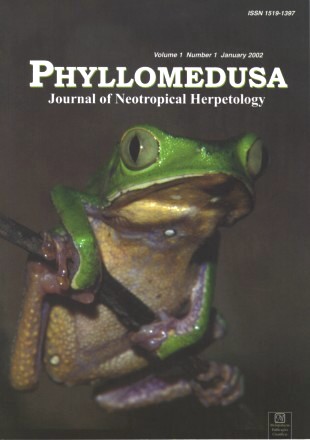Why do breeding frogs colonize some puddles more than others?
DOI:
https://doi.org/10.11606/issn.2316-9079.v1i1p31-40Keywords:
Anura habitat selection, tadpole predators, puddle permanency, southeastern BrazilAbstract
The composition of anuran communities at the Serra do Cipó (southeastern Brazil) was studied to familiarize ourselves with the species that breed in natural puddles. An experiment with artificial puddles was conducted to investigate the relationship of several physical properties of puddles to the pattern of their colonization by breeding anurans; the factors included were puddle size, permanency, pH, distance from a colonizing source, and abundance and richness of potential tadpole predators. Estimates of anuran species richness were based on records of tadpoles and calling males; species richness was higher in puddles with more types of tadpole predators. The number of species of tadpoles was higher in less ephemeral puddles with more predator types, and the number of species of calling males was higher in puddles having greater abundances of tadpole predators. Males may not be sensitive to tadpole-predation risk when they select calling sites, and the same physical characteristics of the puddles may attract both tadpole predators and anurans. For example, puddle permanency probably is such a feature, because in the less ephemeral puddles there were more species of tadpoles, as well as greater numbers and species richness of predators.Downloads
Download data is not yet available.
Downloads
Published
2002-06-01
Issue
Section
Articles
License
All material originally published in Phyllomedusa belongs to Escola Superior de Agricultura Luiz de Queiroz - Universidade de São Paulo. All contents are under a license of Creative Commons BY-NC-ND.How to Cite
Eterovick, P. C., & Fernandes, G. W. (2002). Why do breeding frogs colonize some puddles more than others?. Phyllomedusa: Journal of Herpetology, 1(1), 31-40. https://doi.org/10.11606/issn.2316-9079.v1i1p31-40



 Impact Factor (JCR): 0.600
Impact Factor (JCR): 0.600 CiteScore: 1.0
CiteScore: 1.0